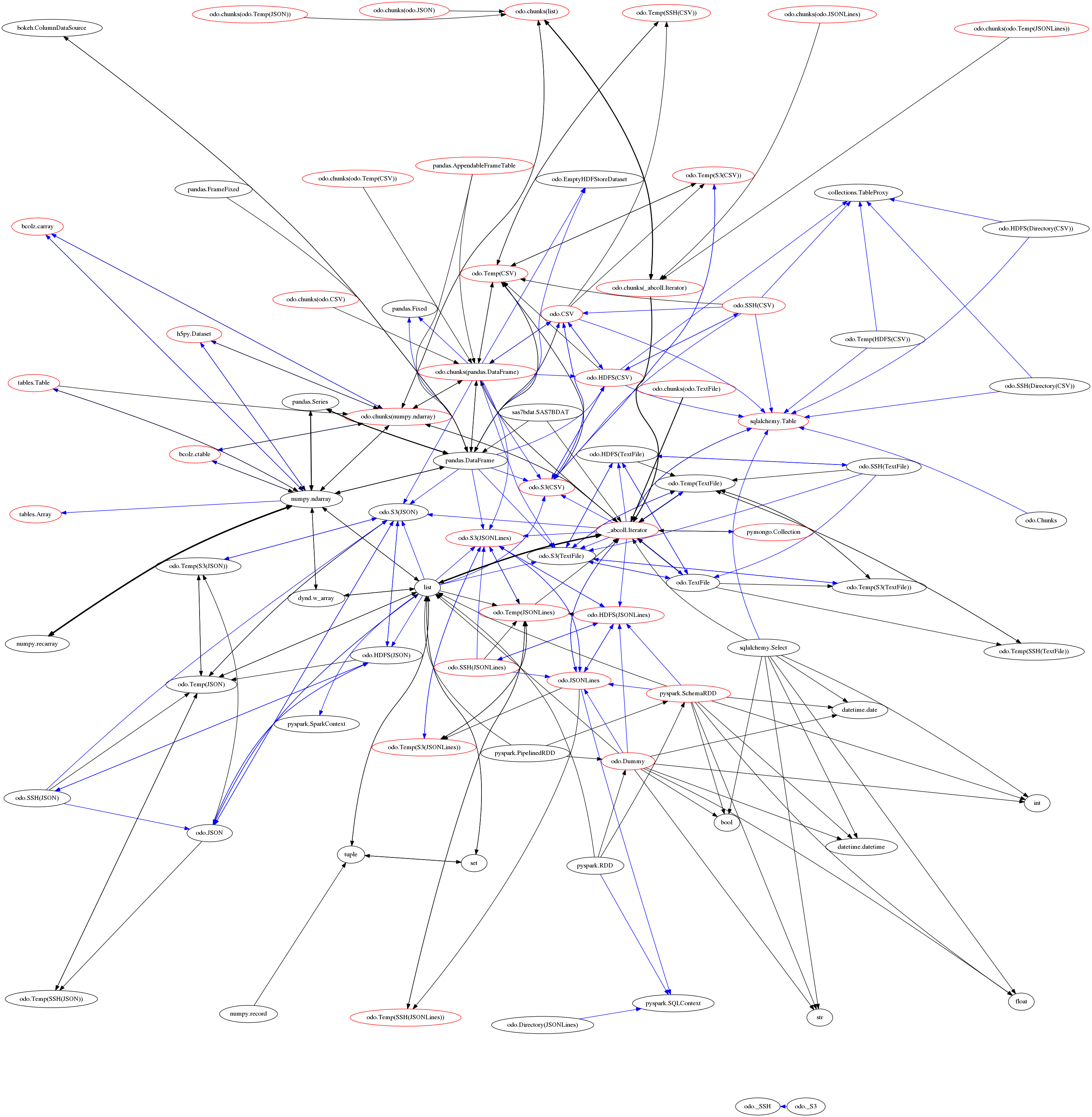Overview¶
Odo migrates between many formats. These include
in-memory structures like list, pd.DataFrame and np.ndarray and
also data outside of Python like CSV/JSON/HDF5 files, SQL databases,
data on remote machines, and the Hadoop File System.
The odo function¶
odo takes two arguments, a source and a target for a data transfer.
>>> from odo import odo
>>> odo(source, target) # load source into target
It efficiently migrates data from the source to the target.
The target and source can take on the following forms
| Source | Target | Example |
|---|---|---|
| Object | Object | An instance of a DataFrame or list |
| String | String Type | 'file.csv', 'postgresql://hostname::tablename'
list, DataFrame |
So the following lines would be valid inputs to odo
>>> odo(df, list) # create new list from Pandas DataFrame
>>> odo(df, []) # append onto existing list
>>> odo(df, 'myfile.json') # Dump dataframe to line-delimited JSON
>>> odo('myfiles.*.csv', Iterator) # Stream through many CSV files
>>> odo(df, 'postgresql://hostname::tablename') # Migrate dataframe to Postgres
>>> odo('myfile.*.csv', 'postgresql://hostname::tablename') # Load CSVs to Postgres
>>> odo('postgresql://hostname::tablename', 'myfile.json') # Dump Postgres to JSON
>>> odo('mongodb://hostname/db::collection', pd.DataFrame) # Dump Mongo to DataFrame
Warning
If the target in odo(source, target) already exists, it must be of a type that
supports in-place append.
>>> odo('myfile.csv', df) # this will raise TypeError because DataFrame is not appendable
Network Effects¶
To convert data any pair of formats odo.odo relies on a network of
pairwise conversions. We visualize that network below

Each node represents a data format. Each directed edge represents a function
to transform data between two formats. A single call to odo may
traverse multiple edges and multiple intermediate formats. Red nodes
support larger-than-memory data.
A single call to odo may traverse several intermediate formats calling on
several conversion functions. These functions are chosen because they are
fast, often far faster than converting through a central serialization format.